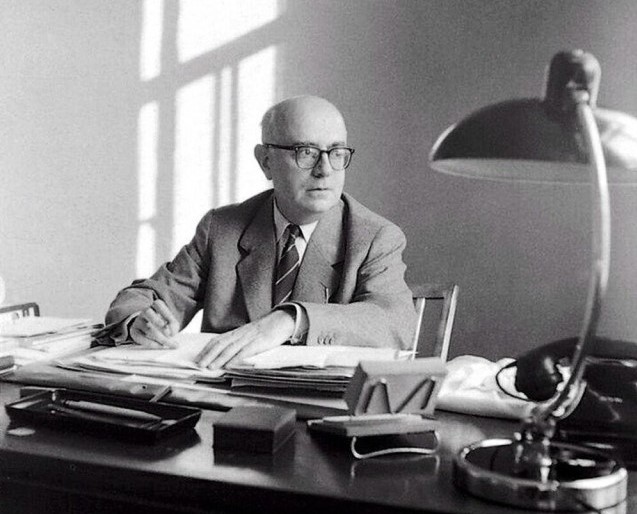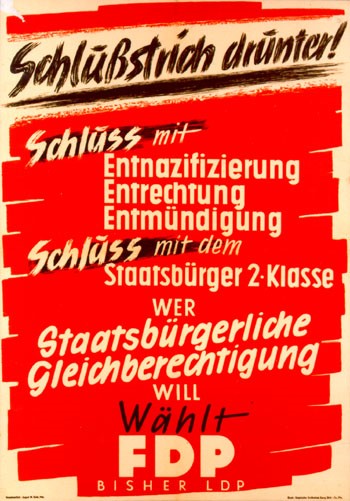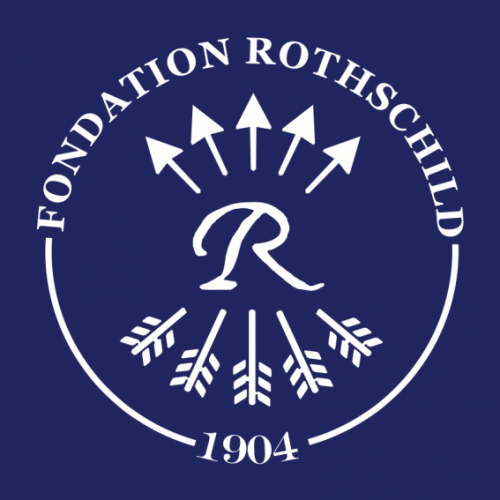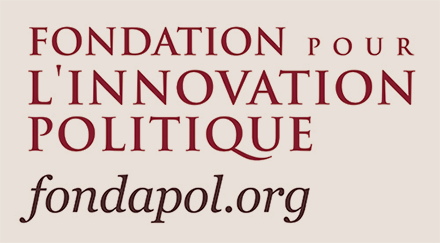The plethora of charges made against Jews requires a constant reworking of the concepts used to characterize these phenomena. In recent years, the notion of “secondary antisemitism” or “guilt-rejecting antisemitism” has thus been invoked to characterize new forms of anti-Jewish hostility that relate to the Holocaust in order to deny it, relativize it, reverse the responsibility for it, etc. The text by the philosopher Bruno Quélennec for K. aims to clarify this major idea for the understanding of contemporary antisemitism.

The concept of “secondary antisemitism” is in common use in German-language studies of contemporary Judeophobia. This new type of anti-Jewish hostility is often described by a formulation attributed to Zvi Rex: “the Germans will never forgive the Jews for Auschwitz.” This antisemitism, not “in spite of, but because of Auschwitz” (Henrik M. Broder), is said to have the particularity of being constructed from a “guilt complex.” It manifests itself in an inability to recognize any form of collective responsibility for the Shoah, in the denial or relativization of the extermination, in a rejection of its commemoration, and in a tendency to reverse the roles of executioner and victim. This article attempts to clarify the contours of the concept of secondary antisemitism by reviewing its genesis. First developed in the context of the Frankfurt School (Peter Schönbach, Theodor W. Adorno), it was later reworked by sociologists who did not belong to this tradition (Werner Bergmann in particular). Based on these two approaches, I attempt to give an operational definition to secondary antisemitism before concluding with the question of its hypothetical contemporary “transnationalization.”
The “matrix” of secondary antisemitism (P. Schönbach, T. W. Adorno)
The concept of secondary antisemitism was first used by the sociologist Peter Schönbach in 1961 in a work on social psychology, in which he argued that anti-Jewish attitudes among the younger generation in Germany were based less on “genuine” National Socialist conviction than on an “appropriation” of the Nazi prejudices of the “father.”[1] In current research, this idea of a “second-hand” antisemitism, transmitted in the family sphere, is often confused with Theodor W. Adorno’s notion of “guilt-rejection antisemitism.” In a qualitative analysis of group interviews conducted at the end of the 1940s (entitled Schuld und Abwehr)[2], the philosopher noted that most of the respondents did not claim any responsibility for Nazi ideology, and recognized the horror of the regime’s policies, but did not want to be seen as guilty. Confronted during the group interview with the (fictitious) criticism of the American soldier “Colburn,” who states in a (also fictitious) letter that the Germans remain overwhelmingly hostile to the Jews after the war and refuse to assume any responsibility for the Nazi crimes[3], a good number of respondents reject this accusation outright[4]. These defensive reflexes are certainly not antisemitic in themselves, but Adorno shows that they can serve as a basis for a reconstitution of anti-Jewish hostility: if the Germans are not responsible or guilty, the Allied occupation, the “re-education” programs, the reparations to be paid, the bombings suffered, lose their legitimacy. All these phenomena can therefore be considered as unjustified attacks on the German people, often presented by the respondents as a collective composed mainly of “innocents” and “victims” of Nazi (and Soviet) terror. In this interpretative framework, the Jews could be the object of accusations of an antisemitic nature: for example, they were denounced for the illegitimate moral, political and financial “pressure” that they exerted on Germany, through the intermediary of the Allies, but also for their alleged control over the black market in the immediate post-war period[5].

To explain this type of reaction, Adorno mobilized the psychoanalytical concepts of “rejection of guilt” and “aggressive projection”[6]: the feeling of guilt, when not worked on consciously, would be blocked and projected outward (i.e. towards the Allies, the Jews, the Displaced Persons, etc.). These more or less unconscious “strategies” of self-exculpation are not always correlated with a past of active compromise with the regime: it is rather the combination of a “latent” feeling of guilt and a “blind” identification with the “nation” that constitutes the necessary and sufficient conditions for this type of potentially antisemitic reflexes. If Schönbach’s study insisted on the question of the intergenerational transmission of prejudice, through the figure of the father whose children wish to keep a “pure” image, Adorno describes a similar mechanism, focusing on the relationship of the individual to the fatherland. For both authors, the ingredients of the matrix of secondary antisemitism are thus a “guilt complex” (individual and psychological level), a group defense reflex (sociological level) and nationalism (ideological and political level). Since the Shoah constitutes an insurmountable obstacle to the development of any kind of pride, responsibility for the extermination must be denied, relativized, circumvented, compensated for, so that its burden no longer weighs on the individual, family or national conscience. Yet it is often in the context of these attempts at self-disculpation that anti-Jewish stereotypes are reactivated.
The “semantics” of secondary antisemitism (W. Bergmann)
From the 1980s onwards, the concept of secondary antisemitism was reformulated and reworked by the sociologist at the Berlin Center for Research on Antisemitism, Werner Bergmann, whose work was inspired less by Schönbach and Adorno than by Luhmannian systems theory. In a 1986 article written with Rainer Erb[7], Bergmann characterized the post-war Federal Republic by a contradictory double reality: while the expression of antisemitism was prohibited in the public sphere, anti-Jewish prejudices still circulated widely in the private and family spheres. According to the two sociologists, the non-expression of antisemitism constitutes at this moment the condition of possibility of “public communication.” It allowed both the recasting of the West German state, built on the myth of a clean break with National Socialism, and the integration of this state into the international community of the “free world.” One consequence of this dual reality is that the public expression of modern antisemitism has been replaced by other forms of Judeophobia that are less subject to censorship. Secondary antisemitism is thus conceived here less as a new “matrix” anchored in a post-Shoah “guilt complex” than as a new semantics allowing the expression of anti-Jewish hostility in the new context of its social and political taboo.

In a 2007 article, W. Bergmann set out to reconstruct the four main forms of articulation. Taken separately, these different “discursive strategies” are not always necessarily antisemitic; we will say that it is their convergence that makes the semantics of secondary antisemitism[8]:
– Holocaust denial or relativization. There is a whole spectrum of options here, ranging from pure and simple negationism to the weighing of the Shoah against other massacres, in order to contest its exceptional character.
– The “count” (Aufrechnung). W. Bergmann distinguishes two subtypes: presenting the Jews as co-responsible for the Shoah or as a collective of “executioners”; constructing the national (German) collective as a collective of “victims” of the Second World War.
– The refusal to address the subject. The sociologist refers here to calls to “put the past behind,” to demand an end to the “culture of repentance” in order to re-establish a “normalized” relationship with the national past (a discourse that is regularly heard today from the far-right Alternative für Deutschland party, but not only).
– Moral discredit. W. Bergmann refers to the widespread idea that the memory of the Shoah is systematically “instrumentalized” in the service of financial and political interests, those of a so-called “Jewish lobby” and/or the State of Israel.
Transnationalization of secondary antisemitism?
One may wonder about the limits of the notion of secondary antisemitism from a temporal point of view (is it relevant for understanding German Judeophobia beyond the generation of the “executioners” and their children?) Does the official recognition of Nazi crimes by the FRG and the integration of a “negative” memory into the (West) German national identity disrupt the post-war antisemitic “matrix”?) and spatially (is the notion of secondary antisemitism “exportable” to other national contexts, notably France?) But we can also ask ourselves whether the globalization of the memory of the Holocaust from the 2000s onwards (think of organizations like the International Holocaust Remrmbrance Association) has not been accompanied by a process of transnationalization of this type of anti-Jewish hostility. Has not antisemitism “because of Auschwitz” been largely untied from the nationalist ideologies of the former “executioner” countries? Doesn’t it constitute a “cultural code” (Shulamit Volkov) integrated into a broader and itself globalized worldview, built in opposition to the “liberal West” and to what is seen as its cultural (and memorial) “imperialism”? Can we not therefore find it today almost as much “on the left” as “on the right”?
Certainly, the elements of the semantics of secondary antisemitism reconstructed by Bergmann circulate throughout the world and are found “on the right” as well as “on the left.”[9] They now constitute a “discursive repertoire” for the multiple actors who attack – for various reasons – the memory of the Shoah. But just as not all criticisms of the so-called “abuse of memory” (Tzvetan Todorov) are antisemitic, not all “memorial” antisemitism is necessarily “secondary.” A few scattered semantic elements alone do not “make” the syndrome of antisemitism “because of Auschwitz.” I therefore suggest that they should not be separated from the specific matrix uncovered by Schönbach and Adorno. According to this hypothesis, in order for there to be secondary antisemitism, the actors who mobilize this semantics must identify themselves in one way or another with the criminal collective: this is why we will find Judeophobia defined in this way tending to be on the side of the extreme right. Some of those who think, especially in France, that the memory of the Shoah takes up “too much space” compared to that of slavery, colonization or the Resistance may be antisemitic. But they are not “secondarily antisemitic” in the sense given here to this notion, insofar as the group they seek to defend was not “represented” (but on the contrary, sometimes persecuted) by the Vichy government or by Nazi Germany. If the semantics are similar, the matrix remains different.
Bruno Quélennec
Notes
| 1 | Peter Schönbach, Reaktionen auf die antisemitische Welle im Winter 1959/1960, Frankfurt/M., Europäische Verlangsanstalt, 1961, p. 80. |
| 2 | Theodor W. Adorno, « Schuld und Abwehr. Eine qualitative Analyse zum Gruppenexperiment » (1955), in Theodor W. Adorno, Soziologische Schriften II.2, Frankfurt/M., Suhrkamp, 2017, p. 121-324. |
| 3 | Ibidem, p. 142-143. |
| 4 | Ces résultats rejoignent ceux d’enquêtes de la même période. Voir Werner Bergmann, « ‘Störenfriede der Erinnerung’. Zum Schuldabwehr-Antisemitismus in Deutschland », in Klaus-Michael Bogdal, Klaus Holz, Matthias N. Lorenz (dir.), Literarischer Antisemitismus nach Auschwitz, Stuttgart, J. B. Metzler, 2007, p. 15. |
| 5 | Theodor W. Adorno, “Schuld und Abwehr”, op. cit., p. 251sq. |
| 6 | Ibidem, p. 147. |
| 7 | Werner Bergmann & Rainer Erb, “Kommunikationslatenz, Moral und öffentliche Meinung. Theoretische Überlegungen zum Antisemitismus in der Bundesrepublik Deutschland”, Kölner Zeitschrift für Soziologie und Sozialpsychologie, Vol. 38, n° 2, 1986, p. 223-246. |
| 8 | Werner Bergmann, « ‘Störenfriede der Erinnerung’ », art. cit. |
| 9 | It should be noted in passing that not all the semantic elements of secondary antisemitism come from Germany: Holocaust denial is to some extent a “French” invention, and the literature on the so-called “Holocaust industry” (Norman Finkelstein) was produced mainly in the United States. |









